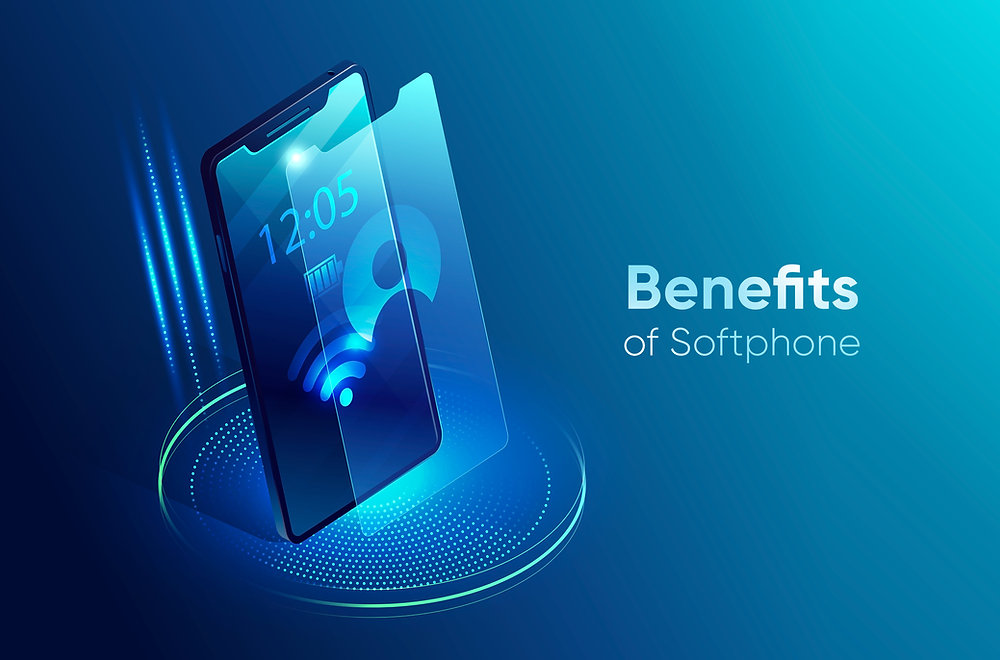What is a Softphone? Your Guide to Cloud-Based Calling
As the world is transitioning to virtual environments, it is crucial to have flexible ways to communicate. In today’s digital world, as everything moves to the cloud, traditional hardware is being replaced by easier online solutions. Even your office phones are going digital. That’s where softphones come into the picture.
Softphones are basically phone systems on your computer. They let you make calls over the Internet and offer other extra features. Gone are the days of being stuck at your desk for calls! In this guide, we’ll explain everything about softphones and how to use them.
Part 1. What is a Softphone?
A softphone is a software application that mimics the functions of a traditional phone. However, it operates entirely within the digital realm. Unlike landline phones or mobile phones, which rely on physical hardware, softphones make use of internet connectivity to facilitate communication.
With softphones, you can make or receive calls over the internet, using VoIP technology. This significantly reduces costs when compared to traditional phone services. They can be installed on any device of your choice including laptops, desktop computers, smartphones, and tablets. This gives the users the flexibility of making calls virtually from almost anywhere with a stable internet connection.

Part 2. How Does a Softphone Work?
Softphones work just like traditional hard phones like plastic desk phones and landlines. However, the difference lies in the fact that softphones make use of software to make or receive calls. Since they run on software, they can do everything that your landline phone does and more.
Softphones make use of VoIP or Voice over Internet Protocol technology to make and receive calls. With a softphone you can make calls over the internet with the help of your tablet, computer, or mobile device.
After logging into a VoIP phone service, softphones automatically register themselves to either receive or initiate calls. Subsequently, the service provider manages the connection and other essential phone system functionalities.
Unlike other traditional phones, a softphone cannot be classified as a physical device but rather as a software application that mimics the interface of your phone on compatible devices.
Softphones provide businesses with a digital solution for engaging in voice calls, messaging, and video conferences using a virtual phone number, all accessible from any location with an internet connection.
Part 3. Benefits and Challenges of Softphones
Now that you know what softphones are and how they work, you may be wondering whether it is the right investment for your company. Here are a few advantages and disadvantages of having softphones that will make your decision-making process easier.
Benefits:
1Saves you money
When you go for the deskphone systems, the costs incurred by you for implementation and maintenance will be quite high. However, softphones do not need any additional hardware. Even the installation and setup can be completed in a few minutes.
2Increased mobility and portability
Since softphones facilitate mobile communications, your business can easily operate on the go. This is the best option for your employees who are working from home, traveling, or even moving around from one place to the other within the office premises.
3Enhanced efficiency
Softphones are pretty efficient in functionality which allows for effective team collaboration in any business setup. The user interface of a softphone has plenty of shortcuts and enhanced functions like visual voicemails, drag-and-drop call transfers, incoming call notifications, and voicemail-to-email configuration. This makes collaboration in any business simple and quick.
4Improved privacy
You may wonder why you may need a softphone when you already have your smartphone. Well, it has its own perks! When you use a softphone app, you can receive calls from your work on your smartphone while keeping the other contacts and personal information on your phone separate. Whenever you make calls from the app, your business number will be displayed and not your personal number. This gives improved privacy to your personal data in your phone.

Challenges:
1Security risks
Since softphones work on VoIP technology, it comes with certain security risks. Some of the common security risks associated with using softphones include DDoS of Distributed Denial of Service attacks, phishing, malware attacks, and call tampering. Some other security threats include VOMIT or Voice Over Misconfigured Internet Telephones and SPIT or Spam over IP Technology.
2Complexity
Technical knowledge and expertise are a must when it comes to configuring softphones. To ensure optimum functionality and connectivity, users will have to navigate through multiple settings and protocols. Since softphones need regular upgrades and maintenance, it further contributes to the complexity involved in their usage.
Part 4. Why is Softphone a Great Choice for Remote Workforce?
Softphones are a great addition to any business with a remote workforce. They give your business the mobility and flexibility needed to run all the operations remotely without having to sacrifice any feature needed to make or receive calls.
Softphones are generally managed centrally from a cloud-based server. This enables your remote workforce to answer any work call from anywhere on earth. The only prerequisite that needs to be fulfilled is that you will need a stable and fast internet connection.
Since every call made by a softphone displays the business number, employees can easily use their personal mobile phones as softphones.

Part 5. Best Practices for Softphone
To ensure optimum performance and utmost security in any organization, it is necessary to implement the best practices for softphones. A few of these are mentioned below.
1. MDM tool for central management
With the MDM tool, it is possible to centrally control all the softphone installations across multiple devices. This ensures uniform configurations and timely updates. With the help of MDM tools, the deployment processes can be streamlined, security policies can be enforced, and risks associated with device tampering and unauthorized access can be mitigated.
2. Call log monitoring
Call log monitoring is very important when it comes to detecting and addressing any suspicious activities or security breaches. When the call logs are reviewed routinely, unusual patterns can be detected by the administrators and any potential threat can be avoided. This is very crucial for protecting any sensitive data that is being transmitted through the softphones.
3. Inactive account deletion
User account management plays a very essential role in maintaining the data integrity of softphone systems. Regular removal of inactive accounts from the softphone directory will minimize the risks associated with unauthorized access.
4. Router with firewall
In order to protect softphone communications, stringent network security measures need to be in place. This includes the use of routers with firewalls. By doing so you can easily monitor and filter the traffic and safeguard your softphone network from malware, unauthorized access, and other similar cyber threats. This minimizes data breaches and network intrusions.
5. Good security practices awareness
When it comes to security breaches, human error plays a significant role. This shows how important it is to generate awareness about good security practices among employees of every organization. It is recommended that the workforce be educated about recognising phishing attempts, creating strong passwords, and avoiding unsecured Wifi networks.
Conclusion
Softphones are great tools for making calls over the internet using your mobile phone or tablets. When you follow the best practices while using softphones, like the ones mentioned in this article, you can make the most out of them and maximize the benefits.






Leave a Reply.